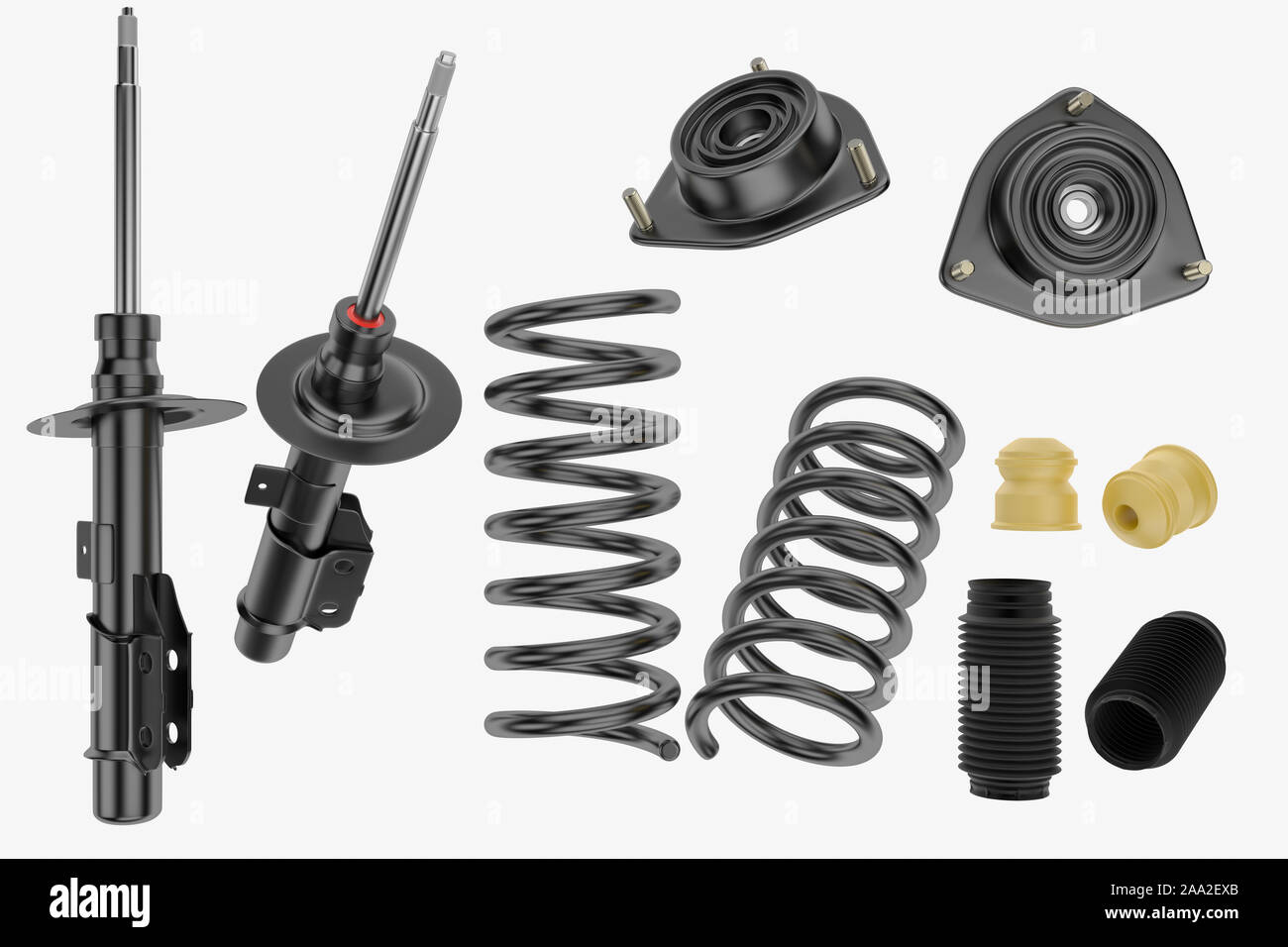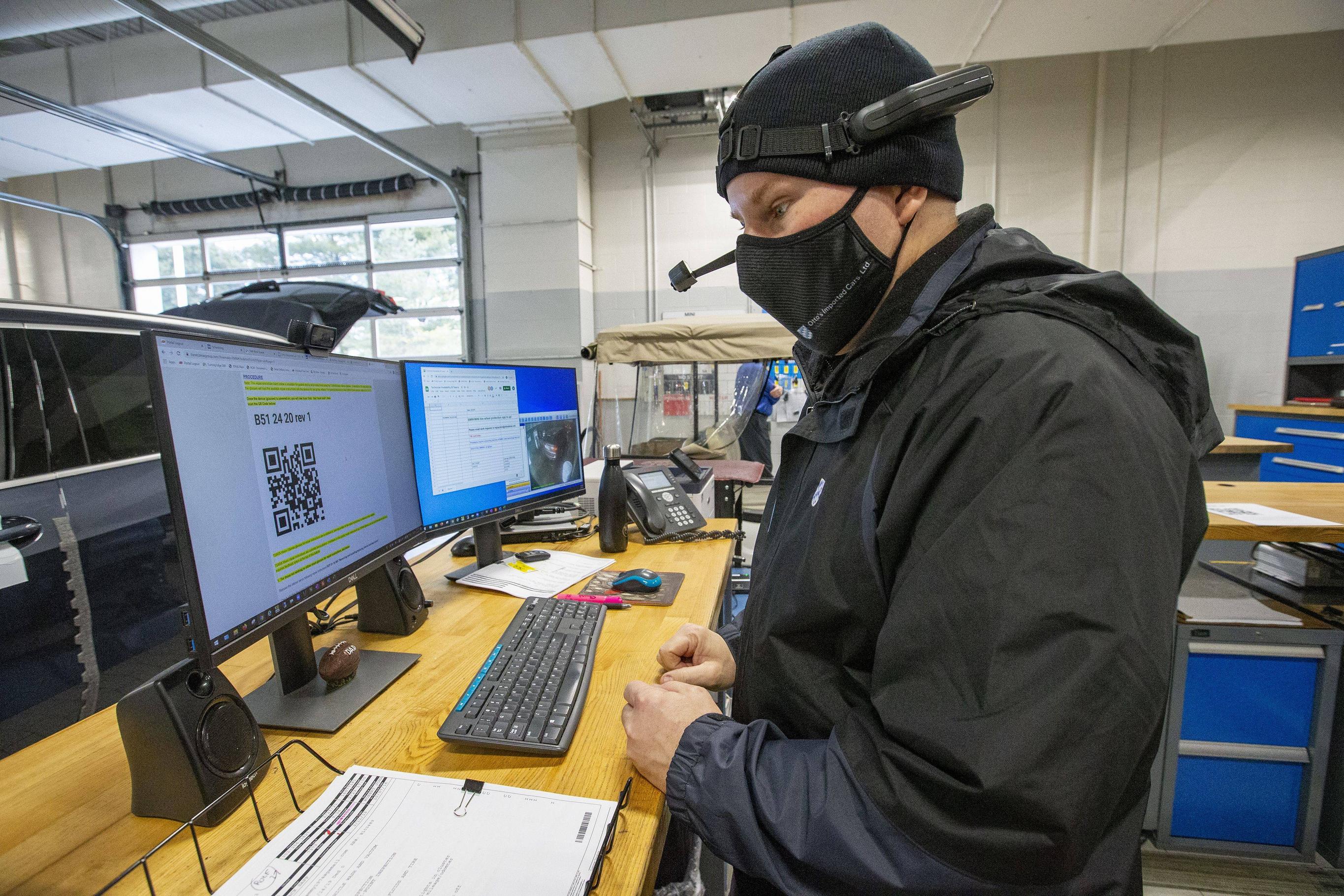
An understanding of basic automotive terms is essential if your goal is to understand all the components of your vehicle. These are the Coil springs (Shock absorber), Drive axle, and Carbureted motor. Let's have a closer look at each term and find out what they mean. This article also covers some common automotive terms you may hear about. Find out more about the components of your car by reading on. There are many terms used in automotive that you might not be aware of.
Coil springs
A coil spring is made of a small piece of metal and tightly wound around a suspension system. It can be hard or soft depending on the manufacturer and its performance depends on a range of parameters. A change in any of these parameters will affect the dynamic performance and the handling of a vehicle. The more coils a spring has, the higher its overall performance. This spring is an essential component of a suspension system. It is crucial in determining how smooth your ride is.
Shock absorber
Shock absorbers are devices in cars that dampen the force caused by rough surfaces and improve the car's handling. They can deform differently and are made from different materials. These devices also differ in their ability to resist changes in temperature and environmental pollution. It may sound complicated to describe a shock absorber, but once you know how it works, it becomes very easy. There are many types available for shock absorbers. They are made to handle different road conditions, and different vehicles.

Drive axle
The drive shaft, or otherwise known as the drive axle, is the primary component of a car's drive train. Although many drivers believe they can repair the drive shaft themselves, a qualified mechanic will be able to diagnose the problem and offer a safe and effective solution. You should verify the warranty on your drive train before you bring your car in to the shop. Be aware of any unusual sounds or fluid leaks coming out of the drive axle. Additionally, keep an eye out for your vehicle's weight limit. Overloading the car could cause damage to your drive axle.
Carbureted engine
Carbureted engines, also known as gasoline-powered engines, are those that use a wick or other means to draw air into a combustion chamber. Fuel vapors are ignited when the air enters the chamber, causing combustion. Modern carburetors employ the Bernoulli principle. This is where air flows through small venturis to deliver fuel proportionally to how much air enters the cylinder.
Dash top sensor
Automotive technology commonly uses the term "dashtop sensing". These sensors monitor levels of brake fluid within the car. The pressure of the brake fluid in a car is regulated by the sensor. This sensor measures the pressure and transmits information to the dashboard via an electrical voltage. The sensor will shut off the switch if the brake fluid level changes. A warning light on your dash will alert you.
Slip coupling
In the automotive world, "limited slip coupling", has many meanings. The limited slip coupling engages with the secondary axle in an all-wheel-drive automatic system. This mechanism relays information to the vehicle’s computer and controls its driving characteristics. It also serves as the conduit for coolant between the engine's cooling system and its heater core. Its importance can best be illustrated by looking at the following examples: engine RPM, ignition timing, and the engine's running temperature.

M85 blend of 85% methanol and 15% gasoline
M85 is a fuel blend made up of 85% methanol and 15% gasoline, which costs the same as mid-grade gasoline in California. This blend is used in most modern vehicles. Flex-fuel vehicles have a sensor that detects the methanol content. This sensor informs the vehicle's computer which type of fuel it is so that it can adjust its ignition and injectors accordingly.
FAQ
What are the requirements of an automotive technician?
High school graduation or GED is required with excellent grades in English and math. You also need to be able to read and write well. The written test will be passed and you will then have to take several practical exams before you can begin work.
What is the length of an automotive training course?
An automotive course is three years long.
The first year is dedicated to theory and learning about cars. Practical training is the second year. You will learn to drive, fix engines and perform other tasks around the car. The last year is spent at a local shop, where you will get practical experience with real-world problems.
Is it possible to work as an automotive mechanic?
Yes, it's possible. Many garages list their vacancies online. Many people simply apply for the fun of it. You can apply for several places to see if they are accepting student applications if you want to get your foot in their door. Another option is to ask family members and friends if anyone works in this industry. You might be able to refer someone.
How long is an apprenticeship for an automotive mechanic?
The apprenticeship to become an automotive mechanic takes about three years. This includes two year at school as well as two years as an apprenticeship. The first year is spent learning all aspects of the trade, including theory, practical skills, and safety procedures. During this time, you'll also learn how to use tools safely and efficiently. After the first year, a second year will be spent on-thejob training. This year you'll get experience in different trades. These are also the times you can attend formal courses.
The last year of your program will be spent earning qualifications and becoming certified. These include NVQs, which are obtained after passing industry-specific exams. There are also HNCs (Higher National Certificates), which cover general subjects like management, business administration, customer service, and more. Finally, there are City & Guilds certificates that are offered for those who wish to become qualified in certain trades.
Are you a mechanic or a technician? Can I study part time?
Although a degree is not necessary, it can be helpful. Employers are more likely to hire candidates who have completed a complete degree. It shows that you've worked hard and are determined to succeed.
You can still study while working, however. Some universities allow students the flexibility to finish coursework during summer vacations and resume their studies later in year. Others allow students to study part-time all year.
What qualifications do you need to be a mechanic?
To become a mechanic, you'll need to pass a series of exams. These include:
-
A test of general knowledge
-
A practical exam
-
An apprenticeship test
These tests are intended to make sure you have a solid understanding of the basics of mechanics before you can start your career as a mechanic.
You'll be eligible for work as a mechanic after you have passed the tests. You will still need to complete an apprenticeship. This will require you to learn the trade.
To learn all there is to know about fixing vehicles, you will need workshops and classes. You'll also have to work alongside experienced mechanics.
To be a successful mechanic, you will need to have a high degree of concentration and attention. It is essential to pay attention to all aspects of vehicle repairs.
To become a successful mechanic you'll need patience. If you don't like to follow instructions, then this may not be the right career path for you.
However, if you love cars or enjoy working on them, you might be happy in this field.
Is being an auto mechanic a promising career choice?
Automotive is an exciting industry filled with opportunities for people who are committed to excellence. The best way to succeed in this field is by working hard and learning as much as possible from others.
Excellent communication skills are essential as you will spend most of the time speaking to customers or other employees. It is important that you are willing to travel, work long hours and be able to commute.
Consider taking classes at local universities or community colleges if your goal is to pursue a career in the automotive industry. Many schools offer programs designed specifically for students interested auto repair, sales, and customer services.
You should choose to study mechanical engineering if you want to get a degree. It's possible to get a bachelor's degree in just four years.
Many employers will hire graduates straight out from school. It's a smart idea to begin looking for work while you have the opportunity to study part-time.
Once you've completed your education, you'll probably need to complete some form of training before being able to take up a position as an automotive technician.
This means you'll need to pass exams such as the Automotive Service Excellence (ASE) certification exam. This test covers engine maintenance and brakes as well as suspension.
Once you've passed the ASE test, you can apply for a license issued by the National Institute for Automotive Service Excellence.
A license allows you to perform repairs on vehicles owned by private individuals. You will be compensated based on how many services you performed.
Not all states require licensing. However, if you plan to work outside your home state, you'll need to obtain a license.
Some states don't issue licenses until after completing a certain amount of training. If this applies to you, then you may need to find another option.
Statistics
- According to the BLS, total auto technician employment is expected to exceed 705,000 by 2030. (uti.edu)
- The U.S. Bureau of Labor Statistics (BLS) reports that the job outlook for automotive service technicians and mechanics is expected to decline by 4% from 2019 to 2029. (indeed.com)
- There were 749,900 jobs available for automotive service technicians and mechanics in 2016, which is expected to grow by six percent through 2026. (jobhero.com)
External Links
How To
How to properly diagnose your vehicle for repair
The symptoms of your vehicle are the first thing you need to look at in order to determine whether it is in dire need of repairs. Follow these steps to properly diagnose your vehicle.
-
Check engine lights. Check the dashboard light indicators such as the engine light indicator, the oil pressure gauge, the battery light indicator, the coolant temperature gauge, and the RPM gauge. If they have been flashing for more days than usual, it could be a sign that something is wrong with the vehicle.
-
Take a look at the treads. If the tires are worn out, they could cause problems with handling and braking. It is also important to inspect the wheel treads. You should ensure that they are clean and smooth. To do this, remove the wheels and take them out. Check the tread condition with a flashlight.
-
Observe the brake fluid level. You must always monitor the level of your brake fluid. This will ensure that your brakes run smoothly. Low brake fluid levels can cause brake failure when you apply pressure.
-
Test the suspension system. Most vehicles have a suspension system that absorbs shocks and vibrations. This suspension system provides greater control and smoother acceleration and deceleration. If your vehicle has a suspension problem, it might feel wobbly or shake uncontrollably. If you are unsure if your vehicle is suffering from a suspension problem, put weight on the front and rear axles to check the movement.
-
Take a look at the steering column. The steering columns are what connect the steering knob to the rest. The steering column can often be damaged by an accident. You should replace the steering column if it is loose or weak.
-
Pay close attention to the exhaust tube. The exhaust pipe helps move gases from a combustion chamber into the atmosphere. Your cabin will be effected if your exhaust pipe cracks or leaks. Additionally, your tailpipe should be fixed immediately if it is bent.
-
Take a look at the underside of your hood. Look underneath your hood to see if anything looks strange. Your engine could be leaking fluids. If you smell something strange coming from your engine compartment you should call a professional technician.
-
It is important to inspect the air filter. The outside environment collects dust and other particles in the vehicle's filter. Dirty air filters can cause your vehicle to run poorly. Replace your air filter regularly.
-
Check the fan belt. Your vehicle's fan belt connects the engine to the transmission. If the fanbel breaks, your engine won't turn. It is very easy to replace your belt. All you need to replace the belt is a screwdriver with pliers.
-
Verify the radiator hoses. The radiatorhose carries water from your radiator to the engine. If the hose becomes damaged or cracked, hot liquid can be emitted onto the engine. To repair the hose, you will only need to use a pair needle-nosepliers and a wire brush.
-
You should inspect the windshield wipers. Windshield wipers work by using electricity to remove rain and snow. If they stop functioning, they can leave streaks in your window glass. Change the washer fluid to fix the problem.
-
You should inspect the cables. The battery cables supply power to your car's electrical systems. When you replace batteries, make sure to disconnect the negative cable first. Failure to do so can damage your alternator.
-
You should check the headlights. Headlights are used to illuminate the road ahead. They can make it difficult to see if they stop working. You can check the bulbs to make sure they aren't burned out.
-
Make sure you have your lights on. You can warn other drivers if you approach them at night. It could cause distraction and even lead to an accident if it doesn't work.
-
Check the brakes. Brakes will reduce the speed of your car in case of an accident. If your brakes aren't working properly, you may lose control and crash into other cars.
-
Change the oil. Oil keeps your engine lubricated. It helps prevent metal parts from wearing out too quickly. It is recommended that you change your oil at least once per month.